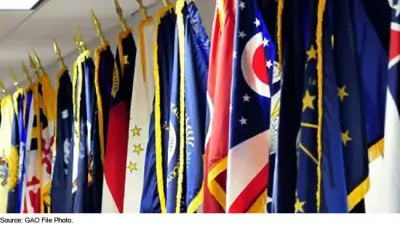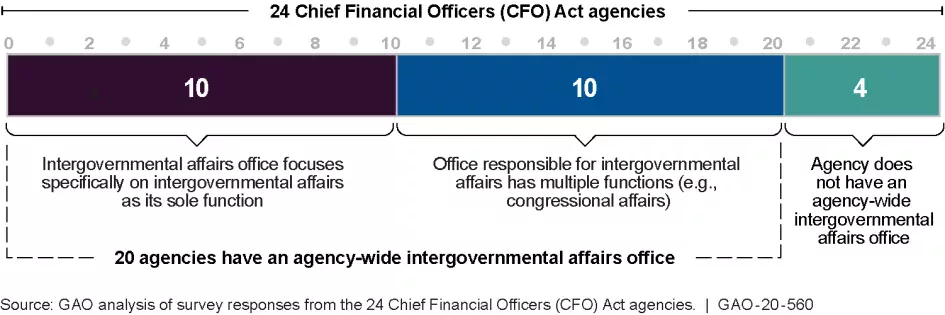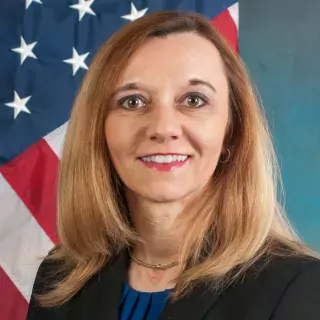The Critical Role of Federal Partnerships with States & Local Governments During COVID-19
Partnerships between federal and local entities are key to achieving national goals for education, health care, transportation, and homeland security, as well as responding to emergencies such as hurricanes or—more recently— the coronavirus pandemic.
Today’s WatchBlog looks at our recent report on how 24 of the largest federal agencies handled their intergovernmental affairs activities. Specifically, we identified their key responsibilities and activities, as well as their interactions with state and local governments.
Image

Effective partnerships between federal agencies and state and local governments are critical for delivering economic relief and health care resources during the COVID-19 pandemic. Responding to this urgent challenge involves all levels of government—federal, state, local, tribal, and territories—and multiple programs and funding sources. For example, in an unprecedented step to respond to COVID-19, the federal government provided an estimated $335 billion in funds to agencies for assisting states, localities, territories, and tribes in their responses to the pandemic.
Outside of the response to the coronavirus pandemic, in 2019, the federal government awarded about $721 billion in grants to state and local governments for a wide range of activities.
How do federal agencies interact with state and local governments?
Because federal policy decisions often affect and require action from state and local governments, an executive order from 1999 provides a set of principles and criteria that executive agencies and departments must follow when formulating and implementing policies that affect state and local governments. This requires that each federal agency designate an official to implement the order. In our recent review, we found that 14 out of 24 selected agencies reported having such an official; 10 agencies did not report having one.
Our review found that most federal agencies established agency-wide intergovernmental affairs offices to share information and coordinate activities in their work with state and local counterparts, including assisting with identifying and applying for federal grants, providing information on regulations, and conducting outreach.
Our review also found that these offices varied in their approach to structuring their intergovernmental affairs operations. Of the 20 agencies with agency-wide intergovernmental affairs offices, half focused on intergovernmental affairs as their sole function while the other half included multiple functions, such as congressional or legislative affairs.
Image

During our review, we met with state and local associations about their interactions with federal agencies’ intergovernmental affairs offices. While representatives from these associations reported interacting with federal agencies’ intergovernmental affairs offices for outreach and information-sharing purposes, they also said they sometimes faced challenges, such as:
- difficulty identifying intergovernmental affairs contacts in federal agencies,
- limited federal agency knowledge of state and local governments, and
- inconsistent federal agency approaches to consultation on proposed regulations.
How could federal interactions with state and local governments be strengthened?
We recommended that the Office of Management and Budget—which issued guidance to federal agencies on implementing the executive order—ensure that federal agencies meet the order’s requirements, especially by designating a federalism official. Doing so could contribute to meaningful and timely federal consultation with state and local governments.
Want to learn more about what we found? Be sure to check out the full report.
GAO Contacts
Related Products

GAO's mission is to provide Congress with fact-based, nonpartisan information that can help improve federal government performance and ensure accountability for the benefit of the American people. GAO launched its WatchBlog in January, 2014, as part of its continuing effort to reach its audiences—Congress and the American people—where they are currently looking for information.
The blog format allows GAO to provide a little more context about its work than it can offer on its other social media platforms. Posts will tie GAO work to current events and the news; show how GAO’s work is affecting agencies or legislation; highlight reports, testimonies, and issue areas where GAO does work; and provide information about GAO itself, among other things.
Please send any feedback on GAO's WatchBlog to blog@gao.gov.




